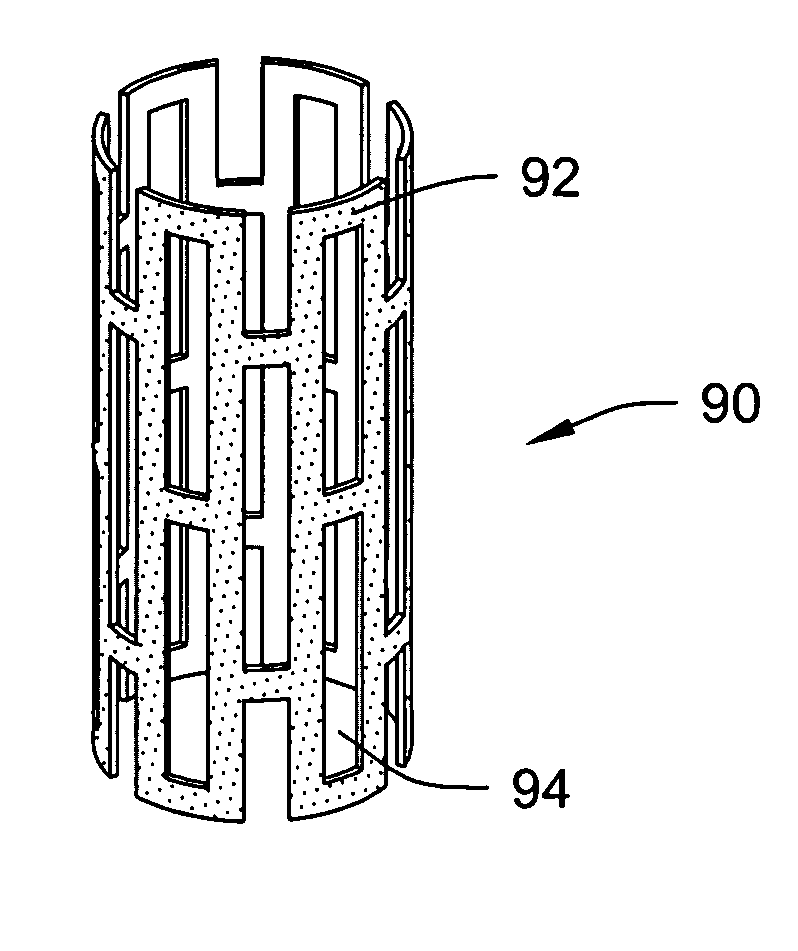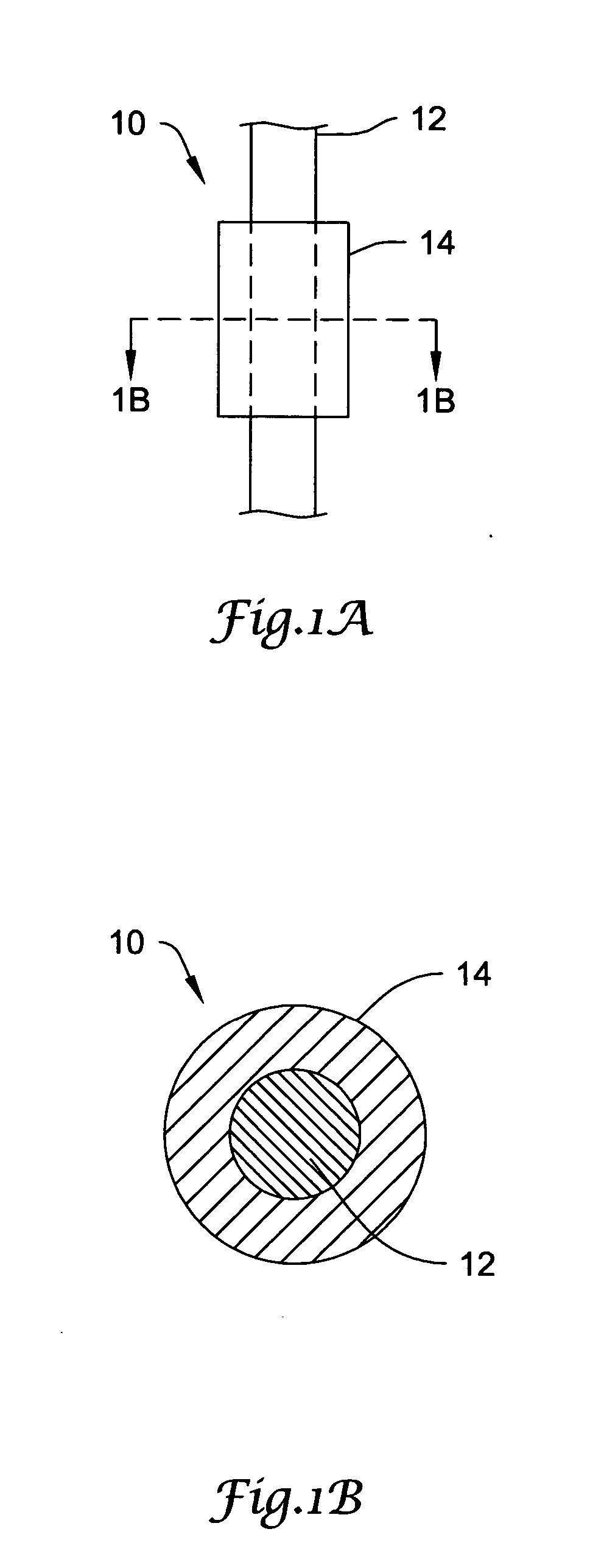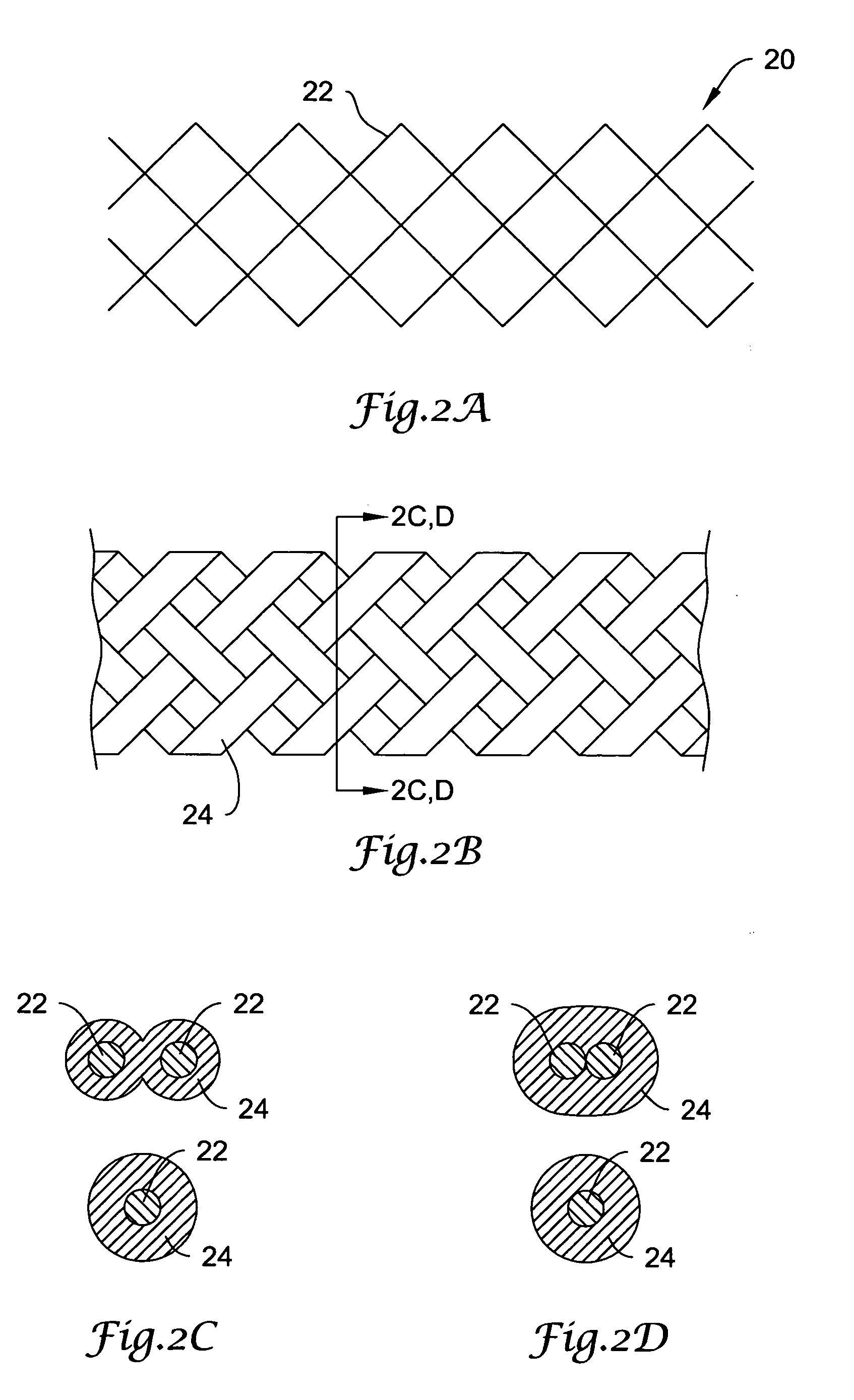Selectively light curable support members for medical devices
a technology of support members and medical devices, applied in the field of support members, can solve the problems of inconvenient operation, laborious and difficult to perfect steps of collapsing and placing a stent over a balloon, and the tendency of self-expanding stents to lack sufficient strength to maintain their expanded shap
- Summary
- Abstract
- Description
- Claims
- Application Information
AI Technical Summary
Benefits of technology
Problems solved by technology
Method used
Image
Examples
Embodiment Construction
[0027] The following detailed description should be read with reference to the drawings. The drawings, which are not necessarily to scale, depict illustrative embodiments and are not intended to limit the scope of the invention. As used herein, the term “light” includes radiation of any wavelength and is not limited to visible, infrared, or ultraviolet wavelengths.
[0028]FIGS. 1A-1B illustrate a strand for use in catheter support members and stents, with FIG. 1B being a cross section along line B-B in FIG. 1A. The strand 10 includes a fiber 12 and a coating 14. The fiber 12 may be metal or non-metallic, and preferably is a polymer fiber. One suitable polymer is a high strength polyethylene fiber sold under the brand Spectra™ by Honeywell®, which is used in Spectra Shield® protective (i.e., bulletproof) materials. Ceramic fibers from 3M or Nextell could also be utilized. Preferably, the coating 14 is a photosensitive polymerizable composition (PPC) which, when exposed to a certain wa...
PUM
| Property | Measurement | Unit |
|---|---|---|
| axial length | aaaaa | aaaaa |
| flexibility | aaaaa | aaaaa |
| stiffness | aaaaa | aaaaa |
Abstract
Description
Claims
Application Information
 Login to View More
Login to View More - R&D
- Intellectual Property
- Life Sciences
- Materials
- Tech Scout
- Unparalleled Data Quality
- Higher Quality Content
- 60% Fewer Hallucinations
Browse by: Latest US Patents, China's latest patents, Technical Efficacy Thesaurus, Application Domain, Technology Topic, Popular Technical Reports.
© 2025 PatSnap. All rights reserved.Legal|Privacy policy|Modern Slavery Act Transparency Statement|Sitemap|About US| Contact US: help@patsnap.com



